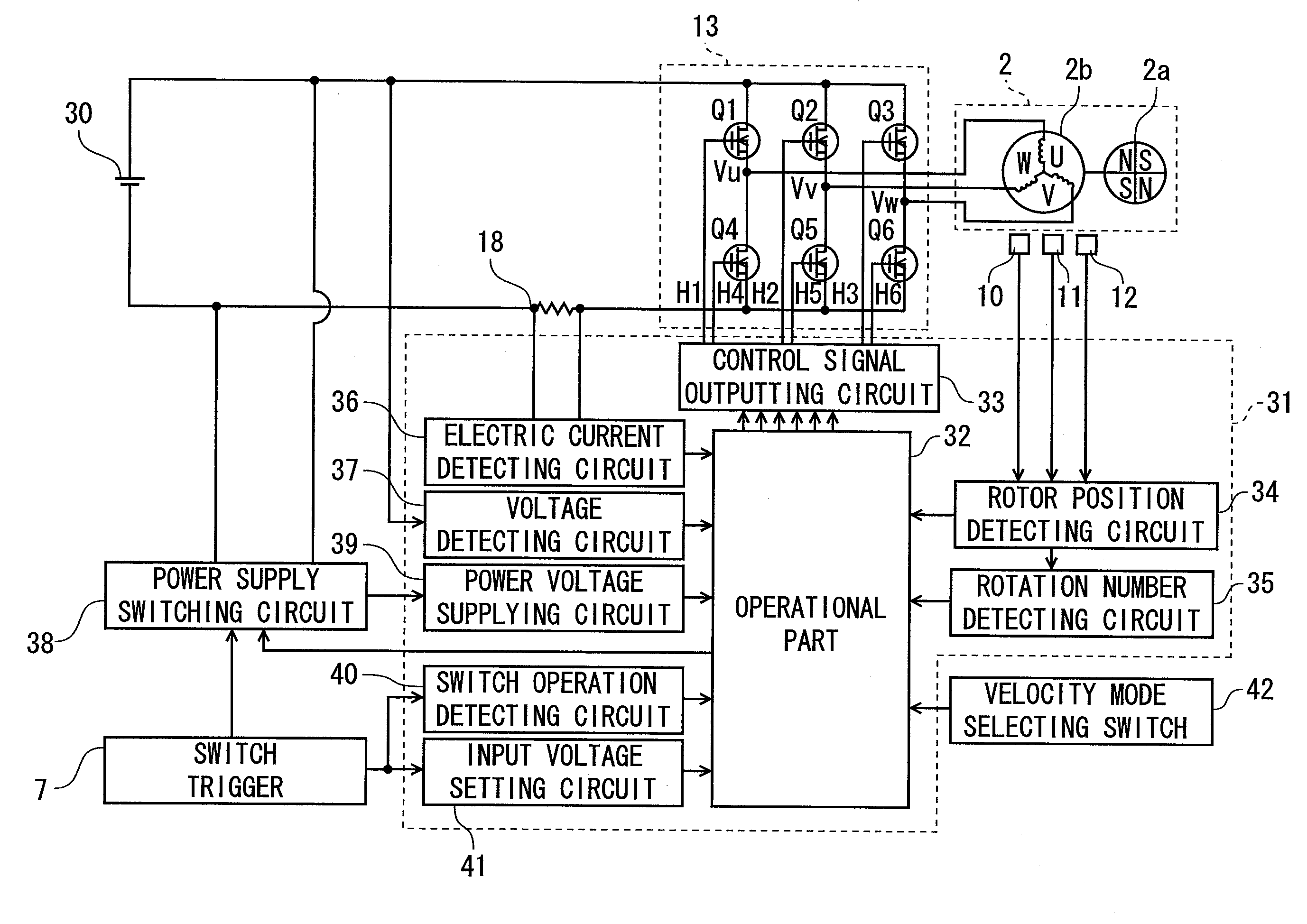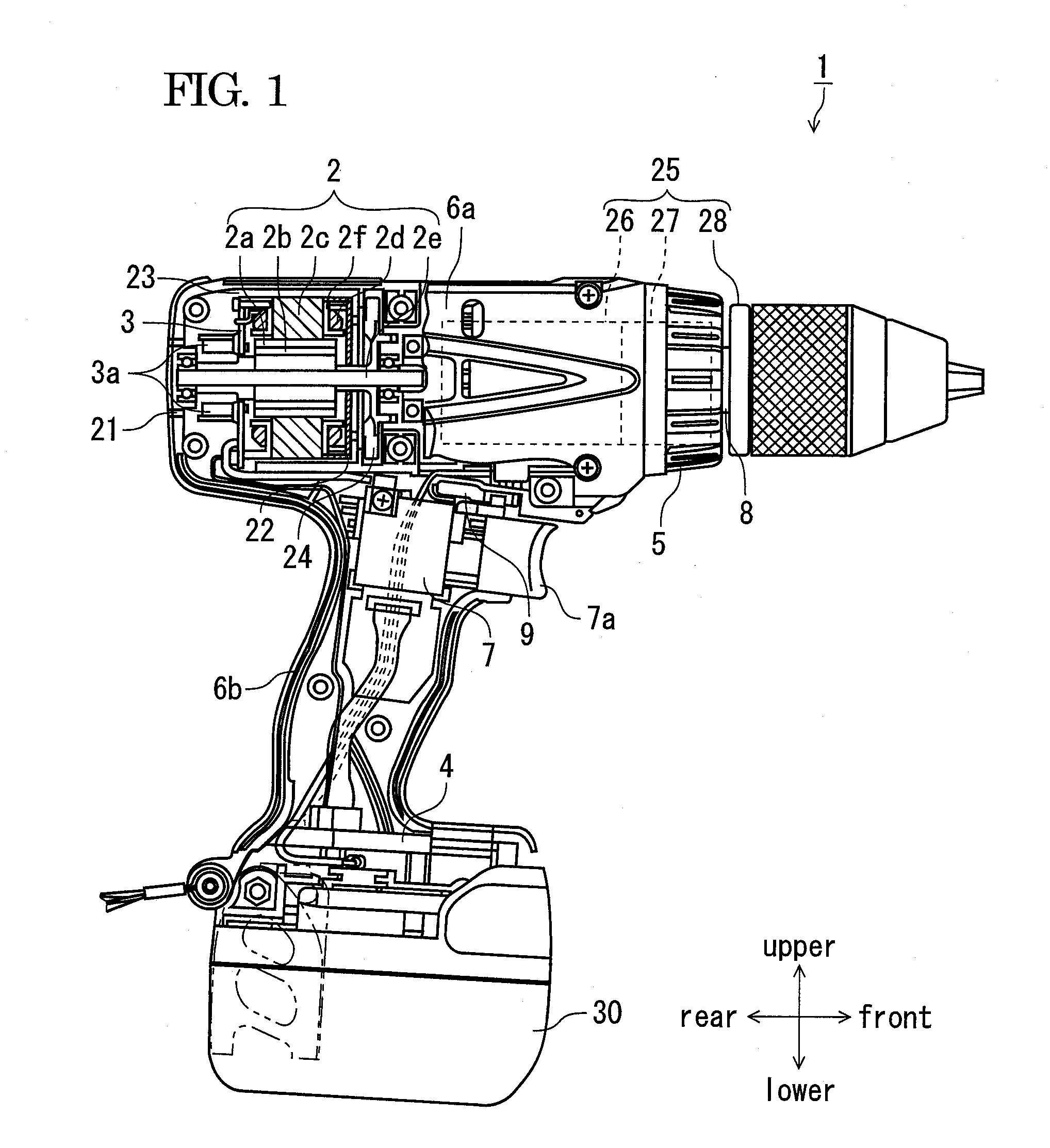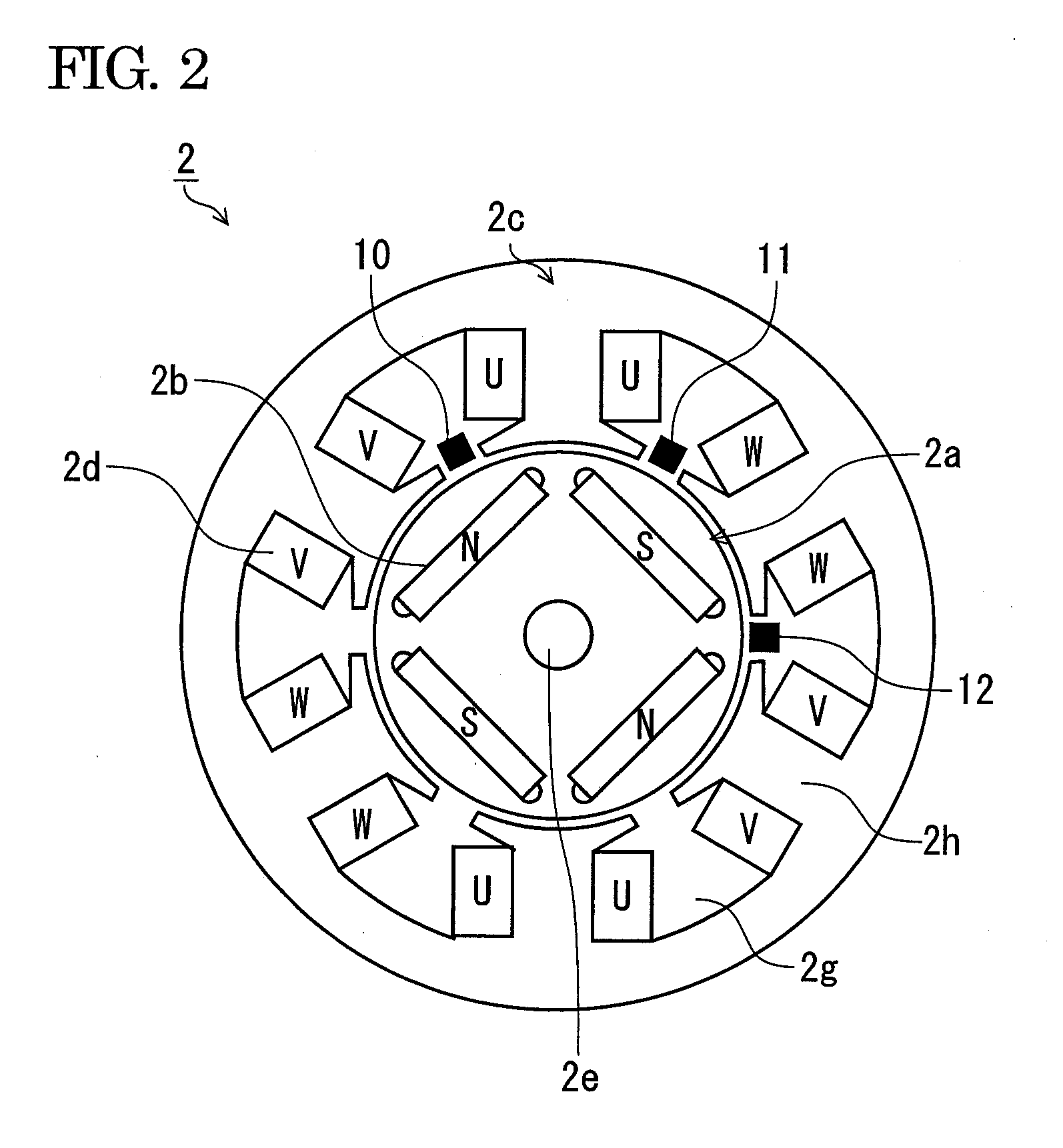Power tool
a technology of power tools and motors, applied in the field of power tools, can solve the problems of deteriorating workability and inability to control the rotation number, and achieve the effects of high efficiency, high accuracy and control of the rotation of the motor
- Summary
- Abstract
- Description
- Claims
- Application Information
AI Technical Summary
Benefits of technology
Problems solved by technology
Method used
Image
Examples
embodiment 1
[0038]Now, an embodiment will be described in detail, referring to the drawings. In this specification, upper, lower, front and rear directions respectively correspond to those directions as shown in FIG. 1. FIG. 1 illustrates a power tool according to an embodiment, a part of which being shown in section. Although a driver drill 1 is exemplified in this embodiment, the invention is not limited thereto, and may be applicable to other power tools such as an impact driver, a hammer drill.
[0039]In FIG. 1, a driver drill 1 includes a motor 2 in a barrel housing part 6a, and rotates a tip tool (not shown) such as a driver and a drill to be detachably attached to a chuck 28 mounted on a spindle (an output shaft) 8, through a power transmitting part 25 for transmitting a driving power of the motor 2. An inverter circuit part (a circuit board) 3 for driving the motor 2 is housed in a rear part of the barrel housing part 6a. The barrel housing 6a houses, in an intermediate part and at a fron...
embodiment 2
[0067]Referring to FIGS. 9 and 10, a control process flow for the motor in a second embodiment will be described. In the first embodiment, the target rotation number based on the power supply voltage is set every time the switch trigger 7 is pulled. On the other hand, in the second embodiment, the target speed is reset, by measuring the power supply voltage when the velocity mode selecting switch 42 is switched, without performing frequent changes of the target rotation number. The controlling state is shown in FIG. 9. In FIG. 9, a Y-axis represents the power supply voltage (the voltage of the battery pack 30) and the target rotation number (rpm) of the motor 2, and an X-axis represents the time (sec). In a lower part of FIG. 9, operation state of the switch trigger 7 (an output of the switch operation detecting circuit 40) and output signals of the velocity mode selecting switch 42 are also shown correspondingly.
[0068]In FIG. 9, in case where plural works are performed by pulling t...
embodiment 3
[0073]Then, referring to FIGS. 11 to 13, a third embodiment will be described. FIG. 11 illustrates relation between the target rotation number of the motor and the output torque. In the comparison-example method for controlling the rotation of the motor with the PWM duty fixed, when the electric current flowing to the motor is increased due to an increase of load such as a repulsive force from the tip tool, the rotation number of the motor is decreased in inverse proportion to the current, as indicated by a dotted line 111. On the other hand, in a constant-speed control method employing the PID control as indicated n by a solid line 113, for the purpose of rotating the motor at the target speed, the control of the input value is performed by feeding back using three elements including a deviation between the output value and the target value, and an integral and a differential thereof. By using the PID control in this manner, the rotation number of the motor is kept constant, until ...
PUM
 Login to View More
Login to View More Abstract
Description
Claims
Application Information
 Login to View More
Login to View More - R&D
- Intellectual Property
- Life Sciences
- Materials
- Tech Scout
- Unparalleled Data Quality
- Higher Quality Content
- 60% Fewer Hallucinations
Browse by: Latest US Patents, China's latest patents, Technical Efficacy Thesaurus, Application Domain, Technology Topic, Popular Technical Reports.
© 2025 PatSnap. All rights reserved.Legal|Privacy policy|Modern Slavery Act Transparency Statement|Sitemap|About US| Contact US: help@patsnap.com



